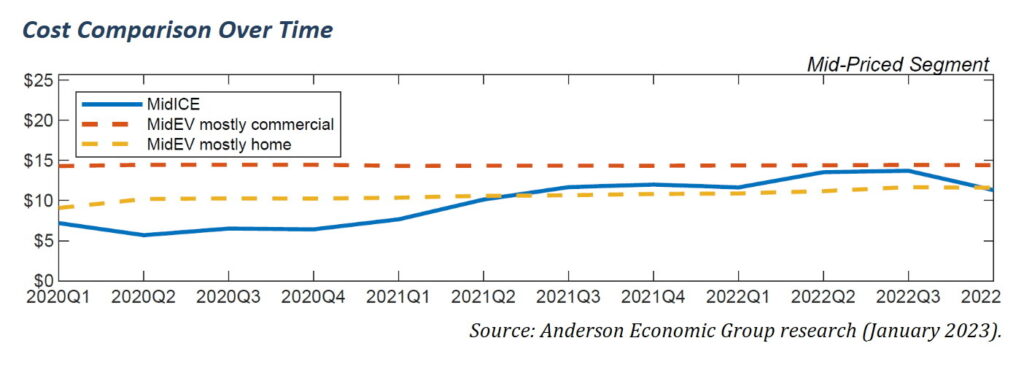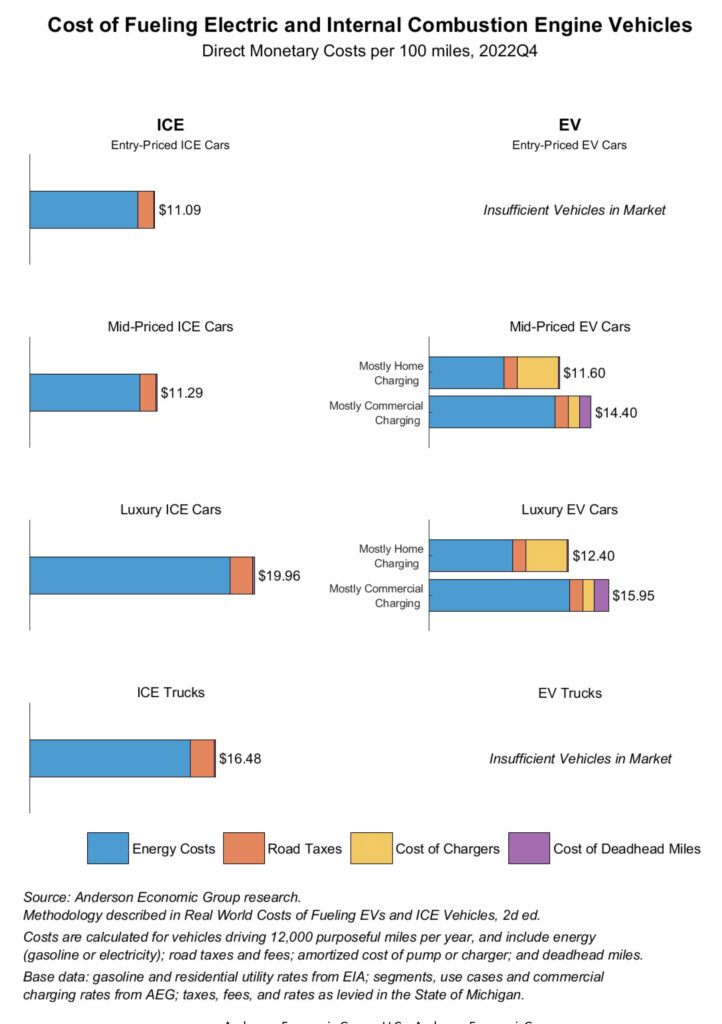Driving a car with an internal combustion engine is getting cheaper at the pump lately. Now, a new study says that it’s getting inexpensive enough that it would actually cost more to go the same distance in a mid-level EV. That qualifier is an important distinction though in what is a nuanced study.
AEG or the Anderson Economic Group just released a study that found gas-powered cars to be cheaper to fuel than EVs in late 2022. It’s the first time since the second quarter of 2021 that such a shift in advantage has taken place regarding fueling costs. At the same time, there’s a lot to unpack.
According to the study, mid-priced ICE car drivers paid roughly $11.29 to go 100 miles. EV owners on the other hand paid about $11.60 to go the same distance. Additionally, the cost for EV owners who have to charge somewhere other than their home goes up by about $3. That’s a notable difference considering all of the fanfare surrounding how much cheaper it is to drive an EV.
More: Take That California! Wyoming Wants To BAN Sales Of EVs By 2035

AEG founder Patrick Anderson says that “The run-up in gas prices made EVs look like a bargain during much of 2021 and 2022. With electric prices going up and gas prices declining, drivers of traditional ICE vehicles saved a little bit of money in the last quarter of 2022.” Still, the study points out that those with luxury EV cars saved a boatload compared to luxury ICE car owners.
Owners of luxury EVs (think Porsche Taycan, Tesla Model S) who charge at home paid about $12.40 per 100 miles while luxury ICE owners paid about $19.96 per 100 miles. Luxury EV owners who charged mostly at commercial stations still beat out ICE owners and paid on average just $15.95. AEG utilized a number of factors like deadhead miles, home charging equipment costs, and road taxes to come up with its figures.
Beyond the two segments, Luxury and Mid-Level, AEG says that there’s not enough data to compare the others. It points to a lack of EV trucks and EV entry-level cars as the biggest problem there. At the same time, it’s worth noting that without accounting for the deadhead miles and ancillary costs, this goes from a very minimal win for ICE vehicles to a resounding loss. We’ll let Jason Fenskey of the YouTube channel Engineering Explained lay it out in his tweet below.









